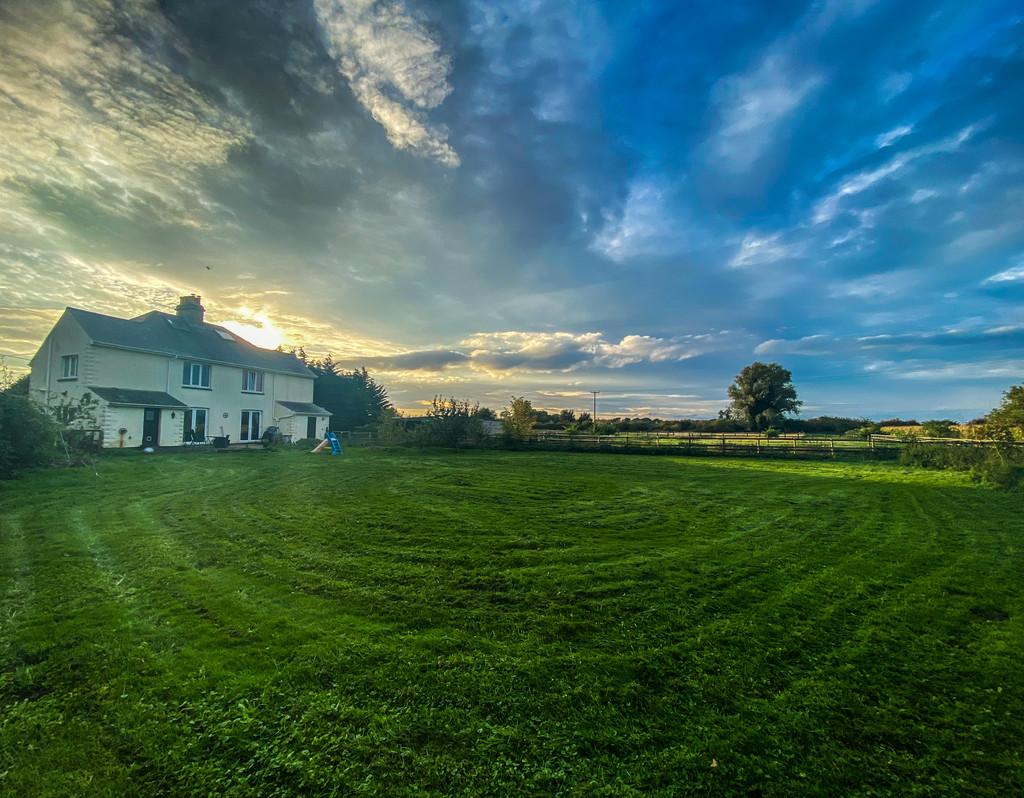The most affordable places in Britain to buy a home in the country
The best value region for rural buyers, the housing measures that were (and weren’t) unveiled in the Autumn Statement, and more: Annabel Dixon runs through what you need to know in the world of bricks and mortar.


Had a busy week? We know the feeling. So we’ve cherry picked five property-related things that have hit the news in recent days for you.
The most affordable country escape revealed
Fancy escaping to the country without forking out a hefty premium for the pleasure? If so, head to the east of England, the most affordable region for buyers seeking a rural retreat, according to estate agency Jackson-Stops.
The average detached home in the rural areas of Bedfordshire, Cambridgeshire, Essex, Hertfordshire, Norfolk, and Suffolk costs £487,483. That’s 37% less than those in the towns and cities (£772,396).
‘The east of England has grown in popularity over the last two years, home to the Cambridge-Oxford Arc as a melting pot for innovation and urban expansion,’ explains Nick Leeming, chairman of Jackson-Stops.
‘Whilst rural hubs around Suffolk and Norfolk have increased in demand thanks to the rise in flexible working and lifestyle trends, there remain plenty of opportunities here for buyers looking for the best of both worlds.’
And at the other end of the spectrum? It’s probably no great surprise but buyers pay the highest premium for a country pad in the south west of England. Yes, the average price of a home in rural spots across Cornwall, Dorset, Devon, Gloucestershire, Somerset, and Wiltshire stands at £563,786. That’s 11% higher than in the urban areas (£508,006).
The research looked at average detached house prices, comparing rural to urban price differences per region.
Sign up for the Country Life Newsletter
Exquisite houses, the beauty of Nature, and how to get the most from your life, straight to your inbox.

What the Autumn Statement means for housing
If you were hoping for one or two major announcements on the housing front in the Autumn Statement this week, then you may have been left feeling a little disappointed.
Chancellor Jeremy Hunt did have some news up his sleeve for the housing market, including extending the mortgage guarantee scheme by 18 months, introducing new planning measures and consulting on new rules to allow one house to be split into two flats.
'All of the planning measures mentioned by the Chancellor are welcome. One of the issues in both the sales and lettings markets is the lack of choice, which is partly to do with a shortage of supply,’ says Jeremy Leaf, north London estate agent and a former RICS residential chairman. ‘Any measures which seek to alleviate that shortage will help to keep not just prices but rents, which have been rocketing, in check.’
Mark Harris, chief executive of mortgage broker SPF Private Clients, called the Autumn Statement ‘a missed opportunity, particularly as far as first-time buyers are concerned’
Leeming adds: ‘The Chancellor’s muted actions today while not a hindrance to the housing market are definitely not the helping hand that many hoped for. Expectations of possible announcements on support for first-time buyers, cuts to stamp duty for downsizers and Inheritance Tax reliefs were all notably absent.’
Pub quiz question: which housing minister has seen the most homes delivered?
The development site sourcing specialist, Searchland, has jumped on the Autumn Statement bandwagon with a different angle. It’s revealed which housing minister (since May 1997) has ‘been most successful when it comes to the number of new dwellings completed under their tenure in the position’.
Lucy Frazer, appointed by Rishi Sunak, saw 18,846 homes completed on average per month, even though she held the position for just four months. Esther McVey ranks second, with an average of 17,978 homes completed per month during her stint as housing minister between July 2019 and February 2020. Yvette Cooper came in third, with an average 17,984 homes built per month.
Searchland’s research is based on the average number of homes built per month while each person held the position. The last two housing ministers, Rachel Maclean and Lee Rowley, have not been included.
Gazundering drops (but 20% of sellers still hit by it)
Being gazundered - it’s what every seller dreads. In other words, when a buyer lowers their offer at the last minute, having previously had a higher offer accepted.
The good news is that cases of gazundering have fallen since the start of 2023, when 31% of sellers had been ‘lowballed’ by their buyer, according to House Buyer Bureau. But the bad news is that one in five sellers are still being gazundered.
Of the sellers who have fallen foul of a lower offer in the last six months, nearly half (47%) were gazundered within a fortnight of completing their sale.
The research is based on a survey of more than 1,000 UK sellers who have sold in the last six months.
The pandemic-led house price boom in numbers
Feeling a little gloomy about house prices right now? Well Yopa has reminded us that it’s not all that bad - at least, if you’re a homeowner.
The estate agency has totted up the numbers and estimated that the total value of the English housing market has climbed by £1.6 trillion (27%) since the start of the pandemic. It now stands at £7.7 trillion.
Verona Frankish, CEO of Yopa, says: ‘While higher mortgage rates and buyer uncertainty may have dampened the current rate of house price growth, this reduction is just a drop in the ocean compared to the meteoric increases seen since the start of the pandemic property market boom.’
-
 Two quick and easy seasonal asparagus recipes to try this Easter Weekend
Two quick and easy seasonal asparagus recipes to try this Easter WeekendAsparagus has royal roots — it was once a favourite of Madame de Pompadour.
By Melanie Johnson Published
-
 Sip tea and laugh at your neighbours in this seaside Norfolk home with a watchtower
Sip tea and laugh at your neighbours in this seaside Norfolk home with a watchtowerOn Cliff Hill in Gorleston, one home is taller than all the others. It could be yours.
By James Fisher Published
-
 Sip tea and laugh at your neighbours in this seaside Norfolk home with a watchtower
Sip tea and laugh at your neighbours in this seaside Norfolk home with a watchtowerOn Cliff Hill in Gorleston, one home is taller than all the others. It could be yours.
By James Fisher Published
-
 A Grecian masterpiece that might be one of the nation's finest homes comes up for sale in Kent
A Grecian masterpiece that might be one of the nation's finest homes comes up for sale in KentGrade I-listed Holwood House sits in 40 acres of private parkland just 15 miles from central London. It is spectacular.
By Penny Churchill Published
-
 Some of the finest landscapes in the North of England with a 12-bedroom home attached
Some of the finest landscapes in the North of England with a 12-bedroom home attachedUpper House in Derbyshire shows why the Kinder landscape was worth fighting for.
By James Fisher Published
-
 Could Gruber's Antiques from Paddington 2 be your new Notting Hill home?
Could Gruber's Antiques from Paddington 2 be your new Notting Hill home?It was the home of Mr Gruber and his antiques in the film, but in the real world, Alice's Antiques could be yours.
By James Fisher Published
-
 What should 1.5 million new homes look like?
What should 1.5 million new homes look like?The King's recent visit to Nansledan with the Prime Minister gives us a clue as to Labour's plans, but what are the benefits of traditional architecture? And can they solve a housing crisis?
By Lucy Denton Published
-
 Welcome to the modern party barn, where disco balls are 'non-negotiable'
Welcome to the modern party barn, where disco balls are 'non-negotiable'A party barn is the ultimate good-time utopia, devoid of the toil of a home gym or the practicalities of a home office. Modern efforts are a world away from the draughty, hay-bales-and-a-hi-fi set-up of yesteryear.
By Madeleine Silver Published
-
 Five beautiful homes, from a barn conversion to an island treasure, as seen in Country Life
Five beautiful homes, from a barn conversion to an island treasure, as seen in Country LifeOur pick of the best homes to come to the market via Country Life in recent days include a wonderful thatched home in Devon and a charming red-brick house with gardens that run down to the water's edge.
By Toby Keel Published
-
 The finest interiors in Edinburgh? A seven-bedroom townhouse furnished by Robert Kime comes to market
The finest interiors in Edinburgh? A seven-bedroom townhouse furnished by Robert Kime comes to marketSituated on one of the New Town's grandest terraces, this four-storey property is a collector's dream.
By James Fisher Published
